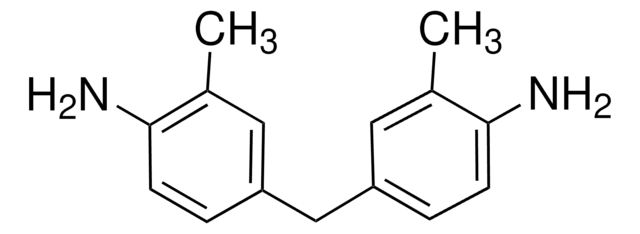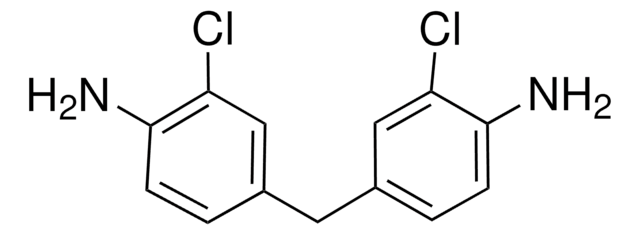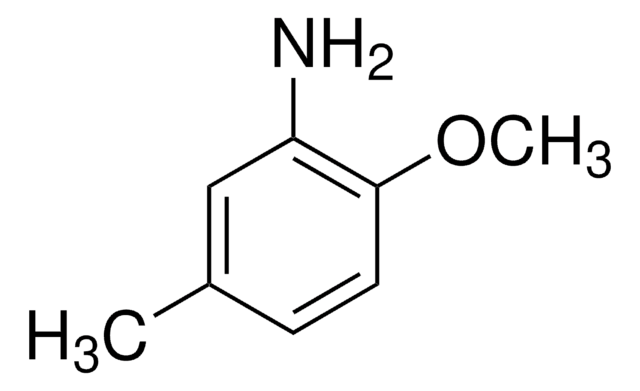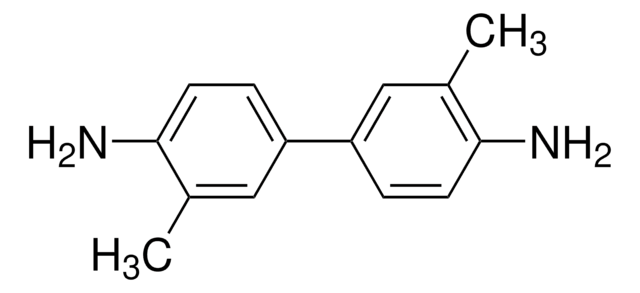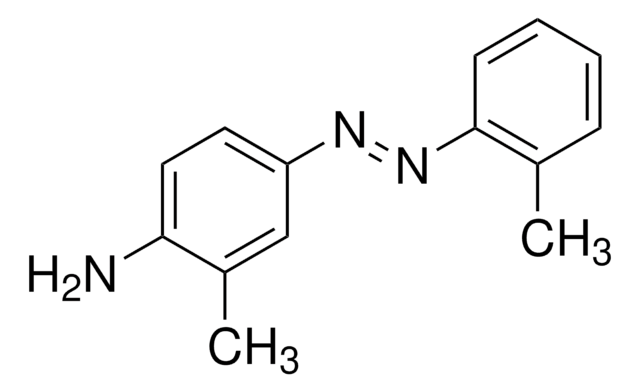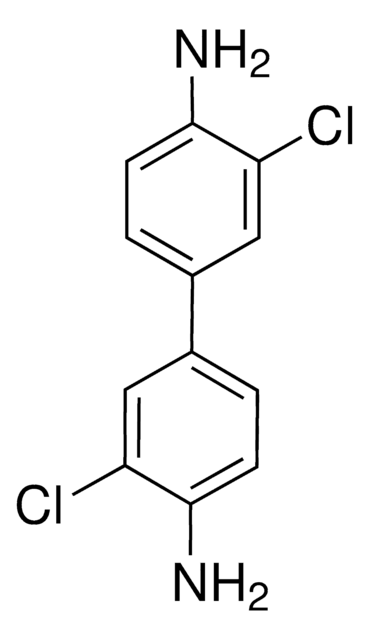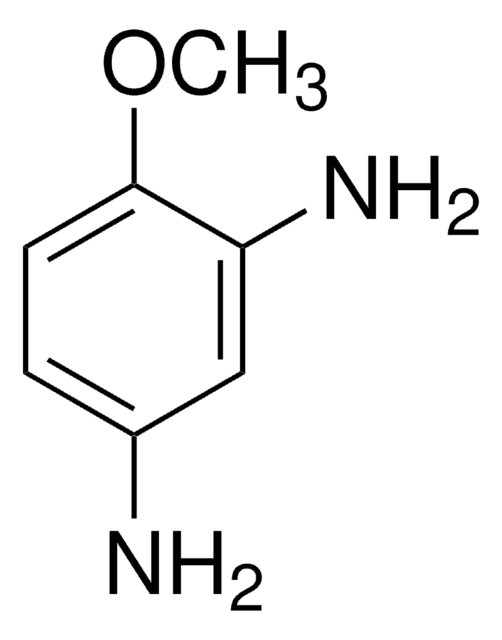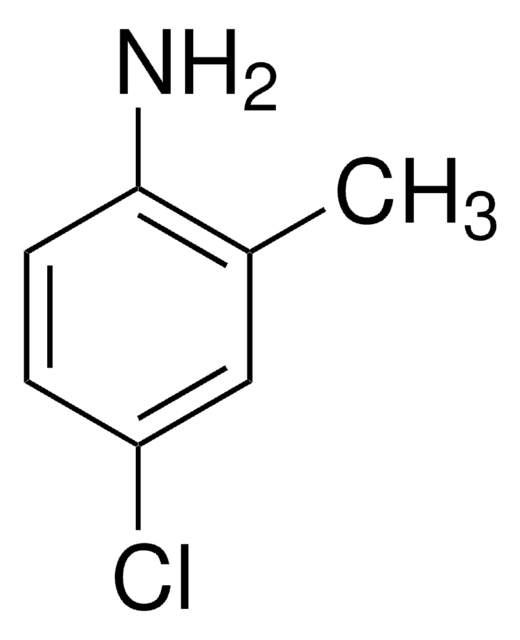66681
4,4′-Methylene-bis(2-chloroaniline)
analytical standard
Synonym(s):
2,2′-Dichloro-4,4′-methylenedianiline, 4,4′-Diamino-3,3′-dichlorodiphenylmethane
About This Item
Recommended Products
grade
analytical standard
shelf life
limited shelf life, expiry date on the label
technique(s)
HPLC: suitable
gas chromatography (GC): suitable
bp
202-214 °C/0.3 mmHg (lit.)
mp
102-107 °C (lit.)
application(s)
environmental
format
neat
SMILES string
Nc1ccc(Cc2ccc(N)c(Cl)c2)cc1Cl
InChI
1S/C13H12Cl2N2/c14-10-6-8(1-3-12(10)16)5-9-2-4-13(17)11(15)7-9/h1-4,6-7H,5,16-17H2
InChI key
IBOFVQJTBBUKMU-UHFFFAOYSA-N
Looking for similar products? Visit Product Comparison Guide
General description
Application
- Urine samples by high performance liquid chromatography (HPLC).
- Textile samples by HPLC coupled to tandem mass spectrometry (MS/MS) equipped with multiple reaction monitoring (MRM) mode of detection.
- Plastic multilayer food packaging materials by LC-Orbitrap-full scan-high resolution mass spectrometry (HRMS) equipped with electrospray ionization (ESI) source.
Other Notes
Recommended products
Signal Word
Danger
Hazard Statements
Precautionary Statements
Hazard Classifications
Acute Tox. 4 Oral - Aquatic Acute 1 - Aquatic Chronic 1 - Carc. 1B - Muta. 2
Storage Class Code
6.1C - Combustible acute toxic Cat.3 / toxic compounds or compounds which causing chronic effects
WGK
WGK 3
Flash Point(F)
235.4 °F - closed cup
Flash Point(C)
113 °C - closed cup
Personal Protective Equipment
Regulatory Listings
Regulatory Listings are mainly provided for chemical products. Only limited information can be provided here for non-chemical products. No entry means none of the components are listed. It is the user’s obligation to ensure the safe and legal use of the product.
EU REACH SVHC Candidate List
EU REACH Annex XVII (Restriction List)
EU REACH Annex XIV (Authorisation List)
Choose from one of the most recent versions:
Already Own This Product?
Find documentation for the products that you have recently purchased in the Document Library.
Customers Also Viewed
Our team of scientists has experience in all areas of research including Life Science, Material Science, Chemical Synthesis, Chromatography, Analytical and many others.
Contact Technical Service